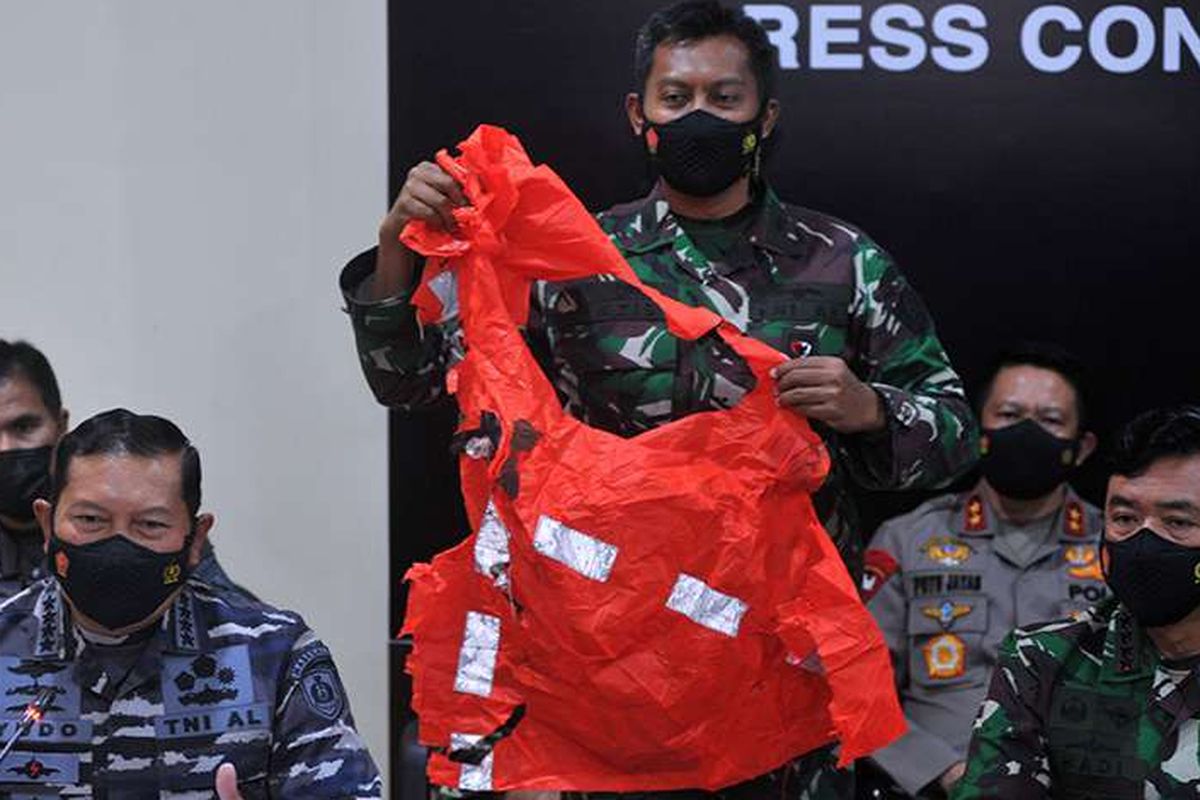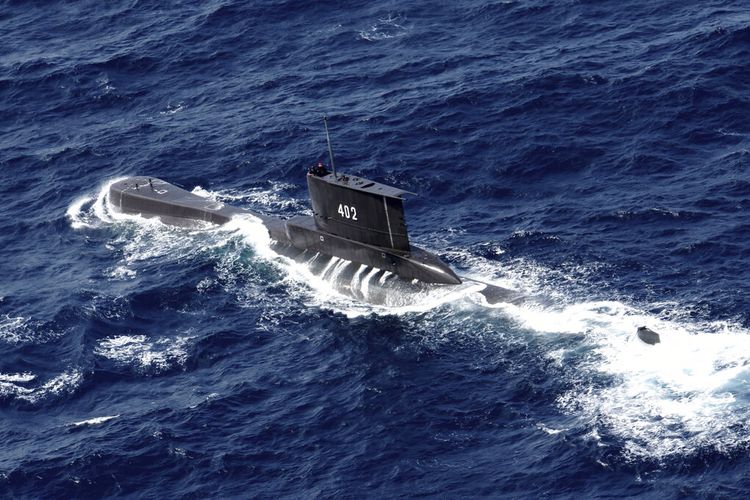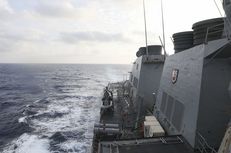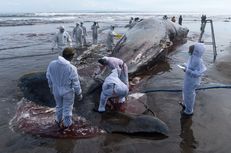
The German-built submarine was more than 40 years old — it was constructed in 1978 — and it has been nine years since its last refit.
Military officials said the submarine went for maintenance in South Korea in 2009 and 2012, and its dive depth increased to around 250 meters.
They said the upper structure of the ship was partially replaced, while the weapons, sonar, radar, combat control, and propulsion systems were upgraded.
Owen said all we know for now is that the submarine sunk and that we won't know more until detailed analysis and research can be done.
"All the evidence that's coming up is just reinforcing that it was probably … a quick end to the submarine," he said.
An orange suit was found. Does that tell us anything?
A bright orange escape suit floating in the dark water may give a glimpse into the final moments for the crew.
"This escape suit was usually kept in a box. The fact that it has come out of the box means there was an emergency," Admiral Margono said.
"Either they were not able to put the suits on fast enough, or the submarine shook while they were trying to put them on."
Other objects were also found by search teams on Saturday, including a bottle of periscope lubricant and fragments of prayer mats.
Those discoveries led the navy to believe the vessel had cracked. "Inside the submarine, the pressure remains about the same until such time as the as the hull is breached, and water comes in, then there's a very rapid increase in pressure," Owen said.
"And down to a reasonable depth of, say, 200 meters, the body can deal with it. "But when you get this rapid increase, it's just catastrophic."
What happens to the submerged bodies now?
 Murhaleni (wearing orange headscarf) who is the mother of Lieutenant Colonel Heri Oktavian, the commander of Indonesia's KRI Nanggala 402 submarine fleet, speaks to a spokesperson for Lampung Police on Saturday, April 24, 2021.
Murhaleni (wearing orange headscarf) who is the mother of Lieutenant Colonel Heri Oktavian, the commander of Indonesia's KRI Nanggala 402 submarine fleet, speaks to a spokesperson for Lampung Police on Saturday, April 24, 2021. Indonesia's navy has said it eventually wants to bring the submarine, and the bodies of the deceased crew, to the surface.
"Lifting a submarine is a very, very significant logistic feat," Owen said, adding that "retrieving the bodies individually, or without lifting the whole submarine, would be a real challenge".


































